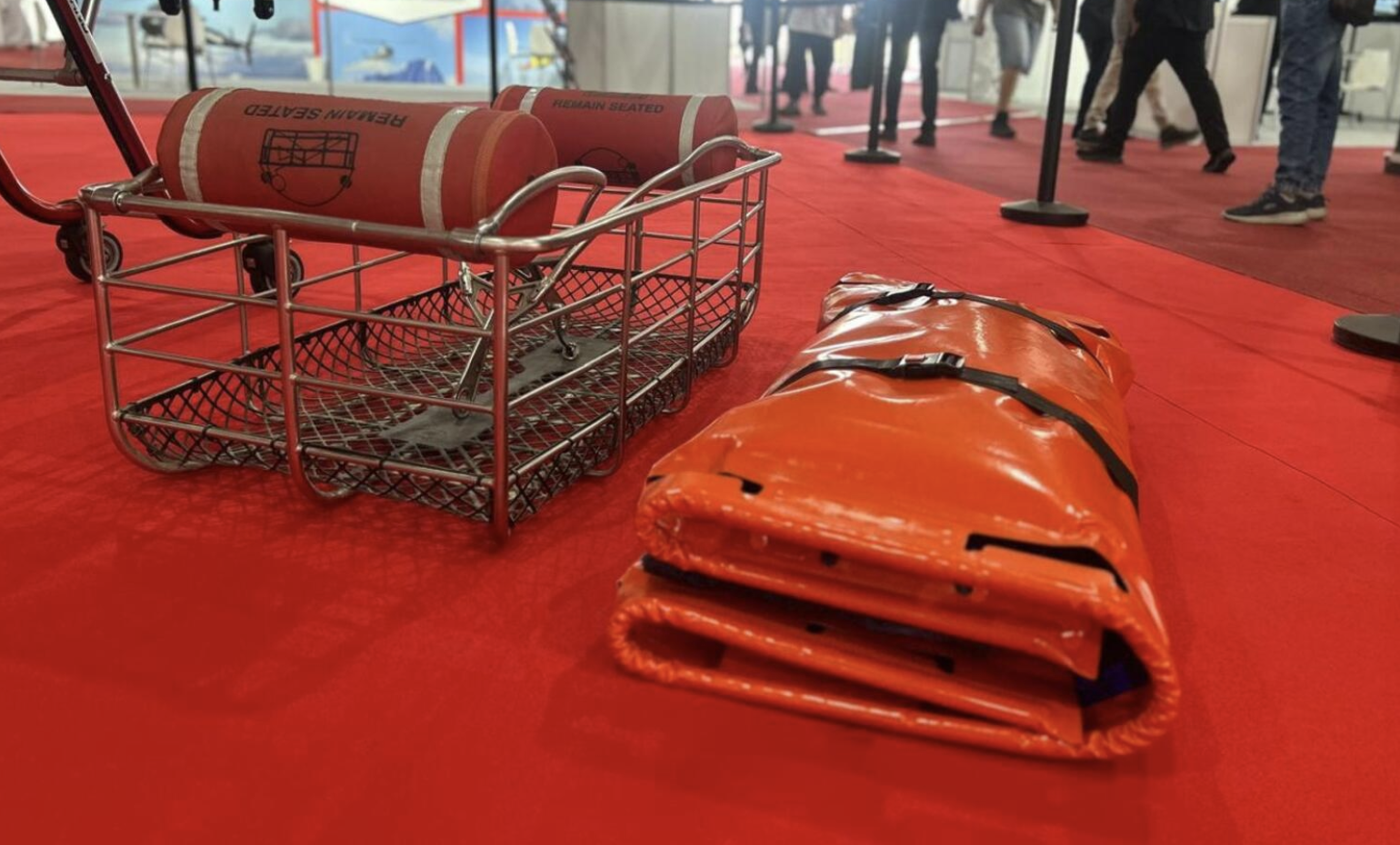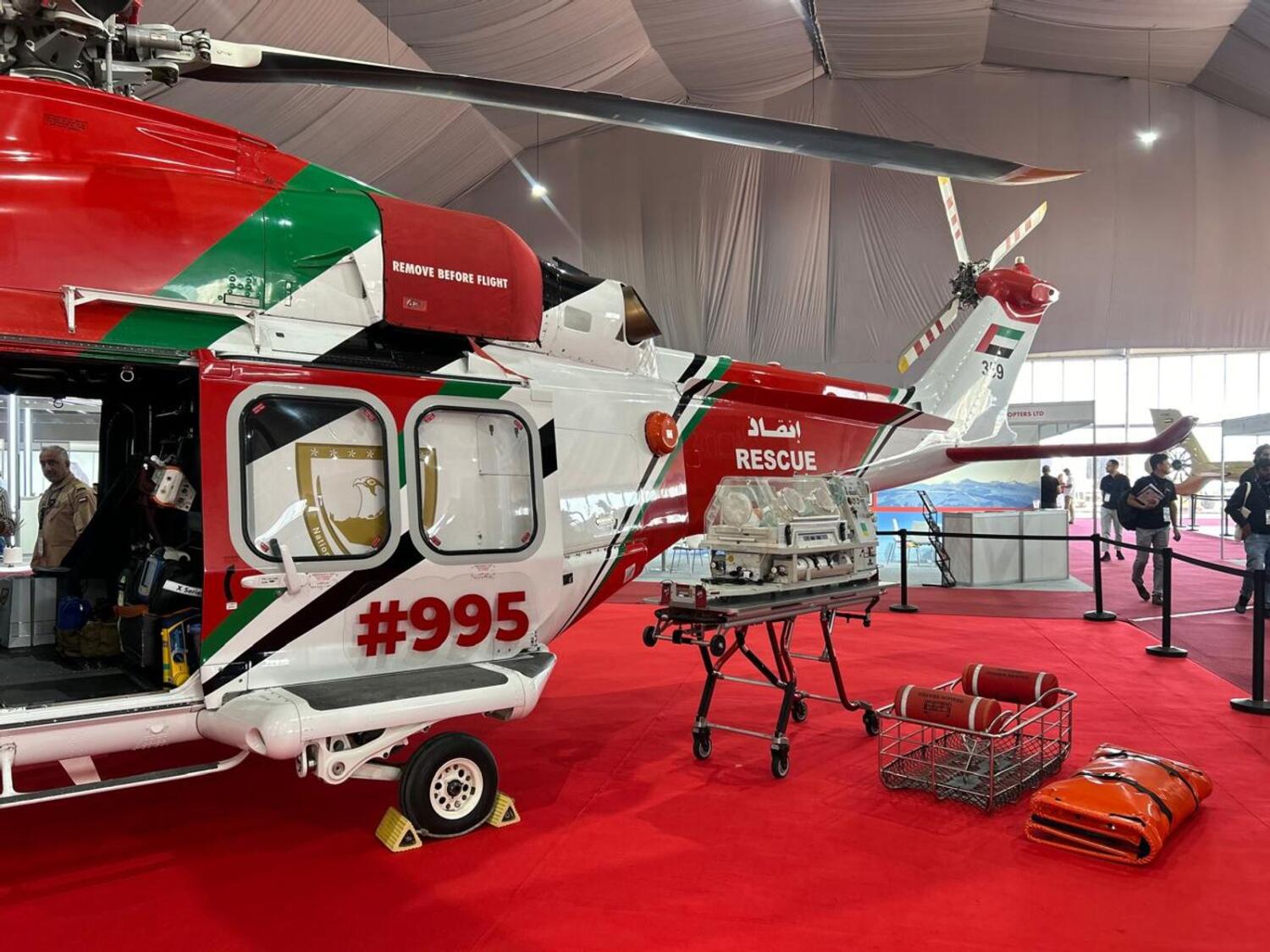The UAE’s search and rescue operations are bolstered by state-of-the-art aircraft, notably the AgustaWestland AW139, which serves as a key asset for the National Search and Rescue Center (NSRC). These aircraft are designed to navigate various terrains—sea, land, and mountains—effectively aiding in emergency situations.
Cutting-Edge Technology for Enhanced Rescues
During the HeliShow Dubai, Captain Ali Al-Shasmi, a veteran pilot with 12 years of experience, praised the AW139’s reliability and advanced features. One of the most critical components is the helicopter’s heat sensors, which are essential for locating individuals in distress.
“The AW139 is equipped with two engines, making it ideal for our search and rescue missions,” Al-Shasmi explained. “We use it not only for searches but also for transporting patients from accident sites to hospitals, able to traverse diverse terrains, whether over land, sea, or rugged mountains.”
Specialized Design for Emergency Operations
The helicopter’s interior is meticulously engineered to support a variety of emergency operations. A longboard on the right side is crucial for accessing challenging locations. “During rescue operations, we lower the longboard to safely bring patients or individuals in distress onboard,” he noted.
For sea rescues, the AW139 employs two methods: a double-lift operation where a rescuer descends to assist the injured, or a basket system to hoist them up.
Advanced Medical Equipment
Medical equipment onboard plays a vital role in the AW139’s capabilities. “We have sophisticated monitoring systems that track vital signs, such as blood pressure and heart rate,” Al-Shasmi said. “In cases involving newborns, we utilize specialized incubators that provide controlled environments for safe transport between hospitals.”
Thermal Imaging for Effective Searches
Equipped with a thermal imaging camera, the AW139 is an invaluable tool during search missions. “This technology enables us to locate missing persons by detecting heat signatures,” Al-Shasmi explained. “Whether it’s a vehicle stranded in the desert or someone lost in the wilderness, the camera provides clarity in challenging conditions.”

Personal Experiences and Challenges
Reflecting on the demanding nature of his work, Al-Shasmi remarked, “Every mission presents unique challenges. The fatigue and risks are always present, but the reward of saving lives is immense.” He recounted a particularly challenging rescue involving a young cyclist with severe injuries: “We reached the site amidst flying sand and hidden hazards. Despite the chaos, we managed to stabilize him and transport him to the hospital.”
The emotional impact of these rescues often resonates long after the mission. Al-Shasmi shared a heartwarming moment from the Dubai Air Show, where he unexpectedly met the young survivor. “He recognized me and expressed his gratitude. Moments like that remind us why we do this work,” he said.
Seasonal Peaks in Operations
Search and rescue operations typically peak during the winter months due to increased outdoor activities. “During this season, we frequently respond to accidents or medical emergencies,” Al-Shasmi explained. “People travel familiar routes, but unforeseen incidents can occur.”
Commitment to Preparedness and Response
The dedication of the UAE’s search and rescue teams is evident in their rigorous preparation and training. Al-Shasmi emphasized the importance of being ready for any situation: “We are always on standby to respond to emergencies, day or night. Our team is trained for various scenarios to ensure we can act swiftly and effectively.”
A Mission of Saving Lives
Al-Shasmi articulated the fundamental mission of their operations: “Our goal is simple yet profound: to save lives. Every challenge we face becomes worthwhile when we can bring someone back to safety.” The AW139 stands as a testament to this commitment, symbolizing the resilience and hope embedded in the UAE’s search and rescue efforts.





